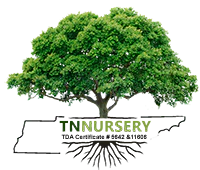Filters
Trees Provide Fresh Oxygen, Cleans The Air, and Cools The Environment
Do you want to help the world? Trees can make a significant difference! They produce fresh oxygen, help you relax, provide shade, and more. Colorful foliage provides soothing visual stimulation.
The Benefits of Trees in Landscaping
Chances are that when you picture a lovely home, its yard will be filled with deciduous hardwoods, evergreens, or both. These flora can add visual appeal and support the biodiversity of almost any landscape. They also boost your property value and provide practical benefits like shade, temperature control, and reduced energy costs.
5 ways trees can enhance your property
Aesthetic Enhancement Deciduous hardwoods and softwoods can add beauty to any landscape.
Their elegant branches, bright foliage, and springtime blooms can harmonize and give character to your outdoor space. Colorful blossoms will give way to seeds, fruits, and red and golden leaves that fall to the ground in autumn, while lush, stately evergreens will beautify your garden all year round.
Increased Property Value If you want to impress your neighbors and increase the value of your home, adding tall, sturdy flora is a sure thing. Mature hardwoods and evergreens are highly desirable assets that can significantly improve the selling price of your property.
Trees can also enhance your privacy and shield your home from noise
Reduced Energy Costs Deciduous hardwoods, softwoods, and evergreens can provide climate control for your home, which can help reduce your energy costs.
Strategically placed flora makes it easier to regulate indoor temperatures and stay comfortable. During the summer, shade plants will keep your house cool and help you spend less on air conditioning. In wintertime, evergreens can deflect cold winds that sap warmth from your home, which can lower your fuel bills. Enhanced Biodiversity You can support the biodiversity of your surroundings by adding deciduous hardwoods, softwoods, and evergreens that provide food and shelter for small animals like squirrels, birds, and insects.
From Songbirds To Reducing Cooling Costs, Trees Have Benefits
Nesting songbirds will enliven your yard with beautiful sounds and bright flashes of color while animal-watching can provide a delightful diversion on a weekend morning. Supporting ecosystems contributing to biodiversity is a great way to celebrate your natural environment.
Adding hardwoods, softwoods, and evergreens to your landscape will bring beauty and harmony to your yard. We encourage you to do your part to care for yourself and your community by planting new trees at home.
















































